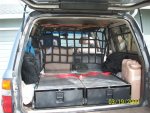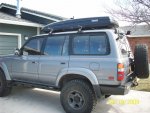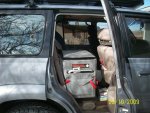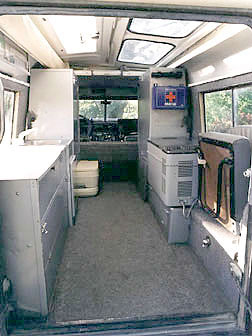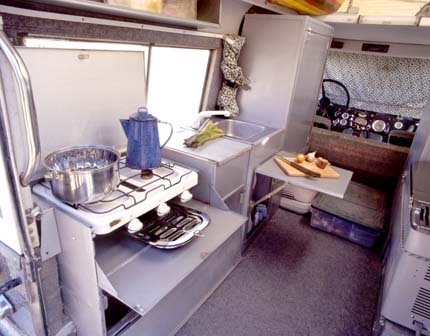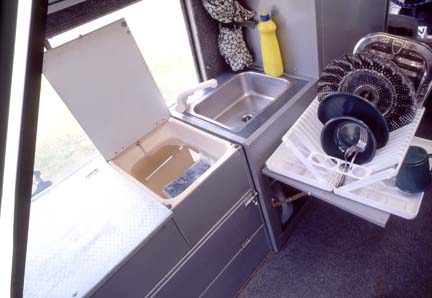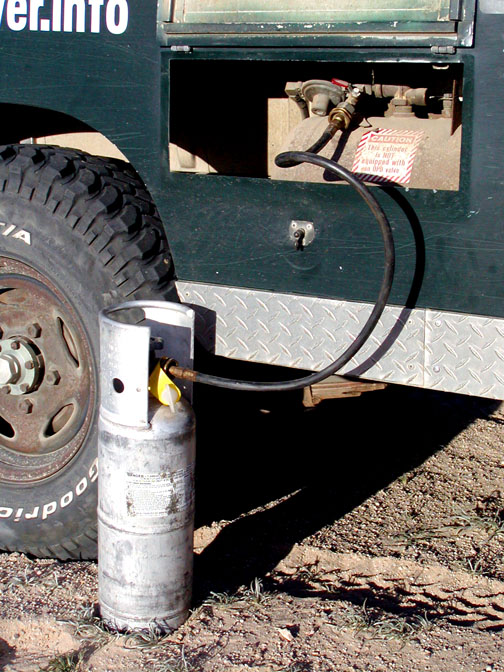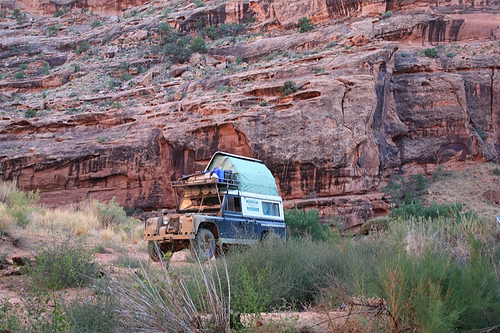CanuckMariner/Nomad
Love having fun 😊 in the 🌞 by the ⛵ and the ⏳
I had been thinking for sometime, how does everyone else stow their gear in their rigs for trips and why do they stow the way they do (reasoning?).
My primary reasoning for the way I do it in my rig is weight distribution and access. I would think most people would think this the same for their situation, right, eh? (eh? = Kanuk for Acceptance!). Other factors, which despite how little you might initially think it matters, it DOES matter and that is tire wear and, fuel efficiency. Fuel is my single biggest cost on trips!
I started initially by just estimating stock and mod weights and planned out gear. MT45 fridge is about 50 lbs empty and up to 100lbs full, so put it in behind me with rear barn door access (73 series) n the pretty much evenly distributed African Outback drawers. . Dual Optima Blue tops (24V NATO compliant) already in the front left corner of the engine bay would be offset by the fridge. Me (driver) in the right seat need offsetting, so dual jerry cans carrier on the rear left (used be triple and fuel - now dual water). Figured Toyota engineers/designers already took the driver/battery distribution in consideration during their design of the truck and who am I to better that, right, eh?
Next, a drive out, with a full fuel tank and water in jerrys, and weight the truck for total weight, left/right sides and front rear axles as well as all four corners. The numbers were quite revealing and I won't bore you with them and the kilogram/pound conversion, but now knowing them sure helps when packing gear.
Other factors to consider are clean stuff versus the dirty stuff (food vs. tools), and of course how often do you need to get at it - access. With African Outback drawers, this is somewhat easier to do and to organize. One drawer is tools, recovery gear and the other is food. I put my dirty stuff (tools, recovery, etc. in the left rear drawer/ and left rear side storage compartments (with only sleeping gear [sleeping bag and self filling mat] on the top of the drawers (right side), this made easy access to main tools for repairs, flats, etc.) which added some weight due to the dual water jerrys on that side already, but easier access with out moving a lot of gear out of the way (rain/snow/mud). A collapsible plastic box right behind the driver seat is for drinks and snacks and along with cooking gear and food in the right drawer, this balanced the weight quite well in all directions. Recently finished and added an Aluminum folding kitchen shelf/tray on the right rear barn door, which may result in me reversing the two drawers as when I cook/prep meals, the tray will be down with still easily sliding out of the fridge for access, but the cooking/food drawer will be in the way of the tray or visa versa. So will try to switch those drawers and see how th weight is and access to everything.
Lastly to offset any other smaller weight distribution issues, my personal gear (recent issues of OJ, toiletries and such) are stored on either side depending on what I think the weight distribution is and what is required to even it out (verified at the scales on the way (no pun) out of town and the adjusted as needed.
You may well ask, what does he do with all that room from the rear of the drawers to the back of the two front bucket seats. Good question! It is a rather large stow area - ~ 4' x 2.5' x 1.25'. To keep the area level so I can extend it out to a folded and forwarded stowed passenger seat, for sleeping, I have two extension boards to match the top of the drawer system. One larger one, to cover the storage area just mentioned and another dual purpose one. This last one serves as the extension to the front folded passenger seat for sleeping on (I get a full 6' 4" and I am only 6' and a bit) and doubles for a work bench on top of the 2 drawers when they are fully extended out.
Hey, you mentioned that storage compartment but didn't say what's in it! Here I usually store (distributed of course) valuable hard to get stuff from my homeland Kanukistan, I am bringing south to various friends cause they plain don't have kool stuff in the USA. Like what do we have that you don't, you may well ask? Like famous, thirst quenching manly beers, Aero chocolate bars, woolly/flannel undergarments (like negligees, nighties, knickers and such) and I can't tell you anymore or I would have to kill you. Let's just say, stuff the USA Border Patrol, Customs Agents and Homeland Security guys are dieing for! As I carry (due to the extreme change in weather from Kanukistan and northern US territories to the southern arid climes) dual sleeping bags (winter/summer) these are stored there as well. Gloves (diesel is smelly dirty stuff, but man is it cheap and efficient), diesel conditioner, condom like gloves for greasy work, snow brush, ice scraper, etc are stowed there right behind the driver seat for easy access.
Photos to follow next time I pack up for a trip - Easter weekend - Cypress Hills!
OK, now lets hear from you all as to what's wrong with my method/thinking and how you guys do it as well.
My primary reasoning for the way I do it in my rig is weight distribution and access. I would think most people would think this the same for their situation, right, eh? (eh? = Kanuk for Acceptance!). Other factors, which despite how little you might initially think it matters, it DOES matter and that is tire wear and, fuel efficiency. Fuel is my single biggest cost on trips!
I started initially by just estimating stock and mod weights and planned out gear. MT45 fridge is about 50 lbs empty and up to 100lbs full, so put it in behind me with rear barn door access (73 series) n the pretty much evenly distributed African Outback drawers. . Dual Optima Blue tops (24V NATO compliant) already in the front left corner of the engine bay would be offset by the fridge. Me (driver) in the right seat need offsetting, so dual jerry cans carrier on the rear left (used be triple and fuel - now dual water). Figured Toyota engineers/designers already took the driver/battery distribution in consideration during their design of the truck and who am I to better that, right, eh?
Next, a drive out, with a full fuel tank and water in jerrys, and weight the truck for total weight, left/right sides and front rear axles as well as all four corners. The numbers were quite revealing and I won't bore you with them and the kilogram/pound conversion, but now knowing them sure helps when packing gear.
Other factors to consider are clean stuff versus the dirty stuff (food vs. tools), and of course how often do you need to get at it - access. With African Outback drawers, this is somewhat easier to do and to organize. One drawer is tools, recovery gear and the other is food. I put my dirty stuff (tools, recovery, etc. in the left rear drawer/ and left rear side storage compartments (with only sleeping gear [sleeping bag and self filling mat] on the top of the drawers (right side), this made easy access to main tools for repairs, flats, etc.) which added some weight due to the dual water jerrys on that side already, but easier access with out moving a lot of gear out of the way (rain/snow/mud). A collapsible plastic box right behind the driver seat is for drinks and snacks and along with cooking gear and food in the right drawer, this balanced the weight quite well in all directions. Recently finished and added an Aluminum folding kitchen shelf/tray on the right rear barn door, which may result in me reversing the two drawers as when I cook/prep meals, the tray will be down with still easily sliding out of the fridge for access, but the cooking/food drawer will be in the way of the tray or visa versa. So will try to switch those drawers and see how th weight is and access to everything.
Lastly to offset any other smaller weight distribution issues, my personal gear (recent issues of OJ, toiletries and such) are stored on either side depending on what I think the weight distribution is and what is required to even it out (verified at the scales on the way (no pun) out of town and the adjusted as needed.
You may well ask, what does he do with all that room from the rear of the drawers to the back of the two front bucket seats. Good question! It is a rather large stow area - ~ 4' x 2.5' x 1.25'. To keep the area level so I can extend it out to a folded and forwarded stowed passenger seat, for sleeping, I have two extension boards to match the top of the drawer system. One larger one, to cover the storage area just mentioned and another dual purpose one. This last one serves as the extension to the front folded passenger seat for sleeping on (I get a full 6' 4" and I am only 6' and a bit) and doubles for a work bench on top of the 2 drawers when they are fully extended out.
Hey, you mentioned that storage compartment but didn't say what's in it! Here I usually store (distributed of course) valuable hard to get stuff from my homeland Kanukistan, I am bringing south to various friends cause they plain don't have kool stuff in the USA. Like what do we have that you don't, you may well ask? Like famous, thirst quenching manly beers, Aero chocolate bars, woolly/flannel undergarments (like negligees, nighties, knickers and such) and I can't tell you anymore or I would have to kill you. Let's just say, stuff the USA Border Patrol, Customs Agents and Homeland Security guys are dieing for! As I carry (due to the extreme change in weather from Kanukistan and northern US territories to the southern arid climes) dual sleeping bags (winter/summer) these are stored there as well. Gloves (diesel is smelly dirty stuff, but man is it cheap and efficient), diesel conditioner, condom like gloves for greasy work, snow brush, ice scraper, etc are stowed there right behind the driver seat for easy access.
Photos to follow next time I pack up for a trip - Easter weekend - Cypress Hills!
OK, now lets hear from you all as to what's wrong with my method/thinking and how you guys do it as well.
Last edited:



